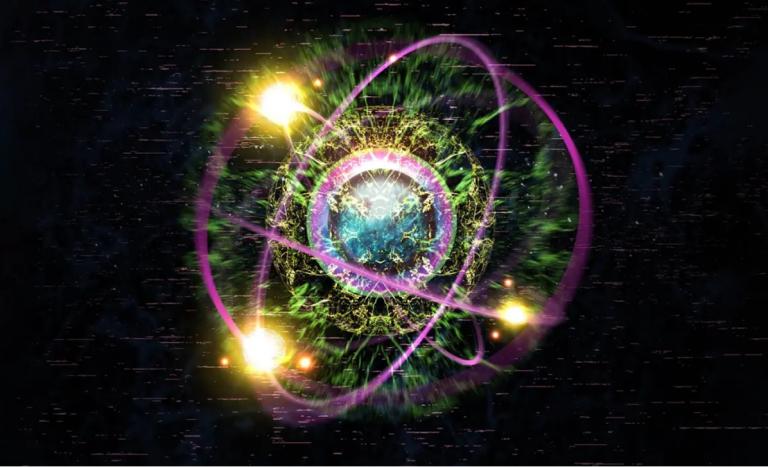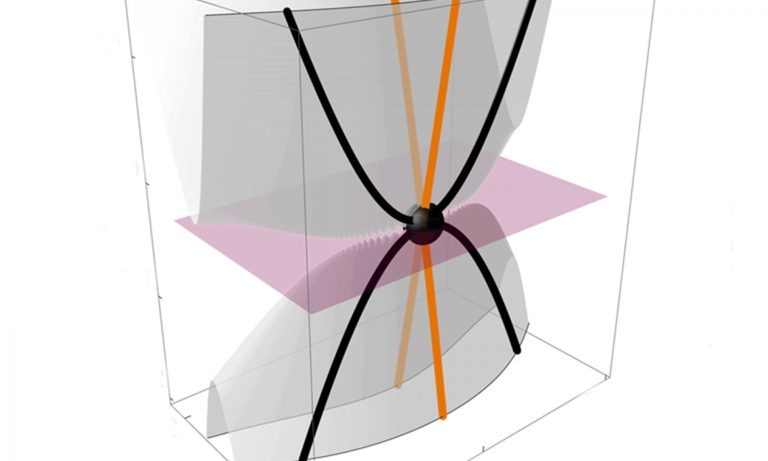Scientists Identify a New Class of Particles in the Subatomic Realm
Scientists have uncovered a potential new category of particles known as paraparticles, challenging the long-standing belief that particles are limited to bosons and fermions. While still theoretical, paraparticles open new possibilities in quantum physics and condensed matter research.
Summary
- Physicists have traditionally categorized subatomic particles into fermions (matter particles like electrons and protons) and bosons (force-related particles like photons and the Higgs boson).
- A third category, paraparticles, has been theorized, potentially reshaping the understanding of particle physics.
- The research, led by Dr. Kaden Hazzard from Rice University and Zhiyuan Wang from the Max Planck Institute of Quantum Optics, delves into condensed matter physics and advanced algebraic frameworks.
- Paraparticles are hypothesized to emerge in condensed matter systems under specific conditions.
- These particles may follow unique exchange rules different from fermions and bosons.
- The study relies on Lie algebra, Hopf algebra, and group theory, bridging theoretical physics with mathematical innovation.
- Paraparticles could find practical applications in quantum computing, much like anyons, a type of quasiparticle.
- Their existence is currently limited to mathematical models in one and two dimensions, with real-world confirmation pending.
- The research raises hopes of uncovering exotic phases of matter and enriching particle physics.
- The study has been published in Nature, highlighting its significance.

Exploring the Basics of Subatomic Particles
For decades, physicists have divided subatomic particles into two families: fermions and bosons. These categories have distinct characteristics:
- Fermions: Particles like electrons and protons that follow the Pauli exclusion principle.
- Bosons: Particles like photons that do not obey the Pauli exclusion principle and can occupy the same quantum state.
This classification relies on properties such as spin and behavior under quantum statistics.
However, recent research suggests that this dichotomy might not be the whole story. A new class of quasiparticles called paraparticles could provide fresh insights into the quantum world.
Dr. Kaden Hazzard of Rice University and Zhiyuan Wang, a researcher at the Max Planck Institute of Quantum Optics, are at the forefront of this discovery.
The Discovery of Paraparticles
The concept of paraparticles arose from studies in condensed matter systems, where materials like magnets exhibit complicated quantum behaviors. By employing advanced algebraic methods, Hazzard and Wang demonstrated that paraparticles could emerge as unique patterns or disturbances in these systems.
Their work challenges the long-standing assumption that bosons and fermions are the only possible particle types.
“Particles aren’t just these fundamental things,” Hazzard remarked, emphasizing the role of quasiparticles, which are effective descriptions of collective particle behavior.
How Paraparticles Work
Quasiparticles differ from fundamental particles as they represent patterns within a larger system rather than standalone entities. Paraparticles, a theoretical subclass, follow distinct exchange rules, diverging from those of fermions and bosons.
The researchers’ calculations, based on Lie algebra, Hopf algebra, and group theory, suggest that paraparticles could operate in low-dimensional systems, such as one or two dimensions.
Practical Implications of Paraparticles
The study raises intriguing possibilities for quantum computing. Much like anyons, which have shown promise for stabilizing quantum information, paraparticles could revolutionize how we store and process data.
Their potential applications extend to understanding exotic phases of matter and enhancing existing theories of condensed matter physics.
The Challenge of Detecting Paraparticles
While the theoretical groundwork is robust, paraparticles have not yet been observed in the real world. Their existence might be confined to highly specific conditions, such as controlled laboratory environments or exotic materials.
Hazzard notes:
“I don’t know where it will go, but I know it will be exciting to find out.”
This sentiment reflects the exploratory nature of this research, where mathematical models pave the way for future experiments.
Future Experiments and Next Steps
The study serves as a mathematical proof of possibility, setting the stage for experimental validation. Scientists may now design experiments to detect paraparticles in advanced laboratories.
Potential avenues for future research include:
- Probing condensed matter systems for paraparticle-like excitations.
- Developing new quantum materials to host these entities.
- Testing low-dimensional models for paraparticle behavior in real-world conditions.
Even small hints of paraparticle existence could lead to groundbreaking discoveries, challenging our understanding of the quantum realm.
Tables for Clarity
Table 1: Comparison of Particle Types
| Category | Examples | Spin | Behavior |
|---|---|---|---|
| Fermions | Electrons, Protons | Half-integer | Follow Pauli exclusion principle, forming matter. |
| Bosons | Photons, Higgs Boson | Integer | Do not obey exclusion principle, mediating forces. |
| Paraparticles | Hypothetical | Undefined | Follow unique exchange rules, distinct from fermions/bosons. |
Table 2: Research Contributions
| Researcher | Affiliation | Contribution |
|---|---|---|
| Dr. Kaden Hazzard | Rice University | Theoretical framework for paraparticles. |
| Zhiyuan Wang | Max Planck Institute of Quantum Optics | Advanced algebraic methods for modeling. |
Facts About Paraparticles
- Mathematics in Physics: The research relied heavily on mathematical disciplines like Lie algebra and Hopf algebra, showcasing the interplay between abstract math and physical phenomena.
- Inspired by Anyons: Paraparticles are conceptually linked to anyons, which have already sparked interest in topological quantum computing.
- Condensed Matter Focus: These discoveries often occur in materials that behave differently under extreme conditions.
The discovery of paraparticles represents a bold step in theoretical physics, challenging the established duality of bosons and fermions.
While their existence remains unconfirmed, their potential to revolutionize fields like quantum computing and condensed matter physics makes them a tantalizing prospect for further research.
“What seems purely theoretical now can sometimes lead to major leaps down the road.”
This study, published in Nature, invites physicists to explore the unknown and redefine the boundaries of particle physics.
References
- Nature: Discovery of Paraparticles
- Rice University
- Max Planck Institute of Quantum Optics
- Energy.gov: Explanation of Bosons and Fermions
- Quasiparticles Research at Münster University






